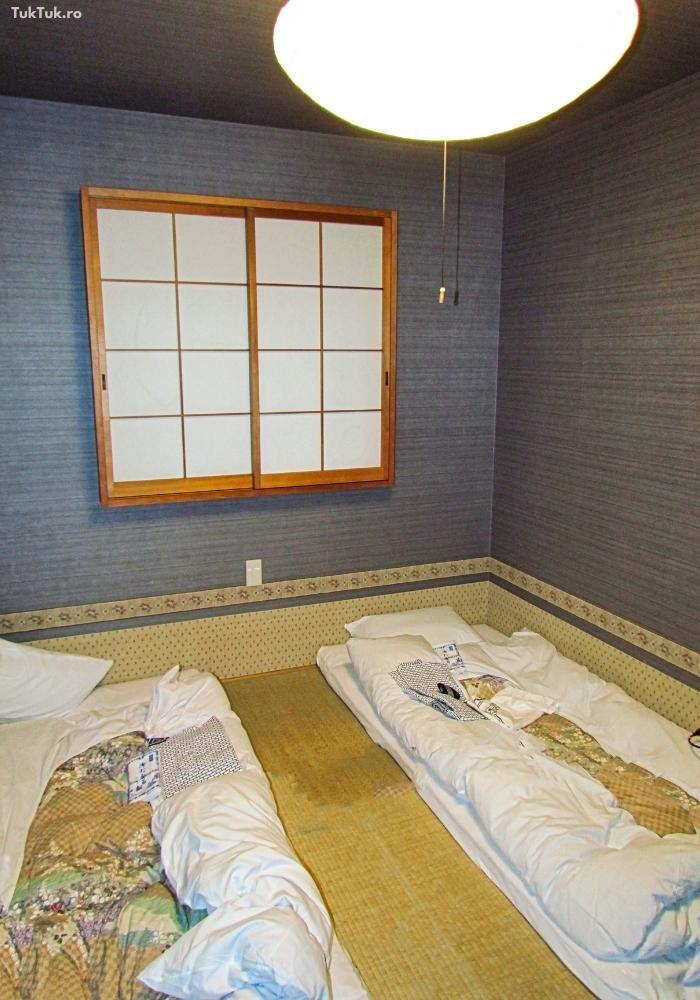The idea of traveling to Japan starts with the question, “Where am I going to accommodate?” Let me be clear: Japan is a costly country. Of course, what “expensive” means may differ from one pocket to another, but consider this aspect if money matters to you. And if I mean the price of a hotel room, well, it fits perfectly into the “expensive” category. For 150 euros, for example (about 16.500 yen on the date I arrived in Tokyo), you will receive a small room in a decent hotel, but whose stars do not exceed the number three.
If you want to experience a traditional Japanese hotel, try to book a room at a ryokan and below you’ll find what to expect from a ryokan experience in Tokyo.. The Ryokans had their origins in the Edo period (1600-1800), when they served as inns to travelers crossing Japan. Tiny rooms with tatamis and mattresses over them; shared bathrooms, and public areas outside the rooms, where guests can spend time dressed in traditional yukata robes or relax in an onsen – thermal baths that we will talk about extensively in another article in the Japanese file.
Nowadays, the ryokans have preserved these elements, even if they have evolved, and most are modern and well-equipped. There are not as many as ever, but in Tokyo or Kyoto, you can find them, especially in the marginal areas. I had the opportunity to experience my stay at the Kangetsu ryokan in Tokyo, located in the southern part of the capital, with relatively easy access to the central districts of the metropolis. (later edit: meanwhile, I’ve read that the hotel was closed).
First ryokan enemy: claustrophobia
The first feeling when I stepped into the ryokan room was claustrophobia. The room is two and a half meters wide. Two mattresses are placed directly on the tatami. On the wall in front of them, a closet incorporates a small refrigerator and a TV. The bathroom is small (like the bathrooms of many Japanese hotels). There’s also a tiny hallway with a hanger. It is forbidden to enter wearing shoes on the tatami, so there are slippers that you can use at the entrance, especially in the hotel’s common areas. Kangetsu is built on a little hill, and the reception is, in fact, on the 3rd floor.

The ryokan room is claustrophobic 
The bathroom is also tiny
There are two relaxation rooms in the reception area, where you can withdraw to read, listen to music at the headphones, massage in special chairs, or socialize. The ryokan also has three onsens, two for women and one for men, located in the reception area. The reception is small and has a mini-stand of souvenirs. Also, here is a coffee and soft drink machine, one of the tens of thousands located all over Japan. As a parenthesis, in Japan, you never get thirsty – at any corner, you find these vending machines equipped with all kinds of drinks, many types of coffee (cold or hot), soft drinks, and teas. You can find vending machines with beer and sake from place to place.

It’s hard enough to accommodate in such a tight room. Air conditioning heating is absolutely mandatory in the cold months because the room is cold. However, the mattresses are comfortable, and sleeping on the tatami is ok. A stout person will feel like a dinosaur in a matchbox in these rooms. Bref, if you check in to a ryokan, try to stay as long as you leave or spend time in common areas or wonderful onsen as long as you are in the hotel. With all these shortcomings, after some accommodation, you will find that the experience of a ryokan is not so tragic. Adapt the proverb “When you’re in Rome, do what the Romans do,” and you will immediately feel Japanese. Or not.
You may also like: Tokyo: Gardens of the Imperial Palace and the Nijubashi Bridge




